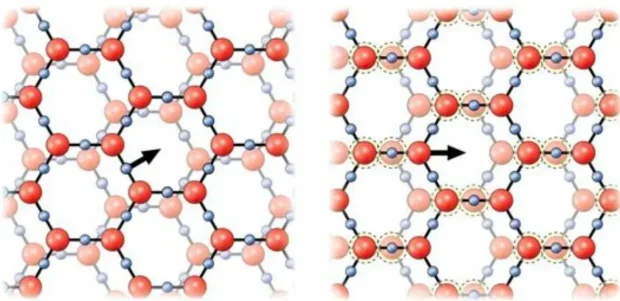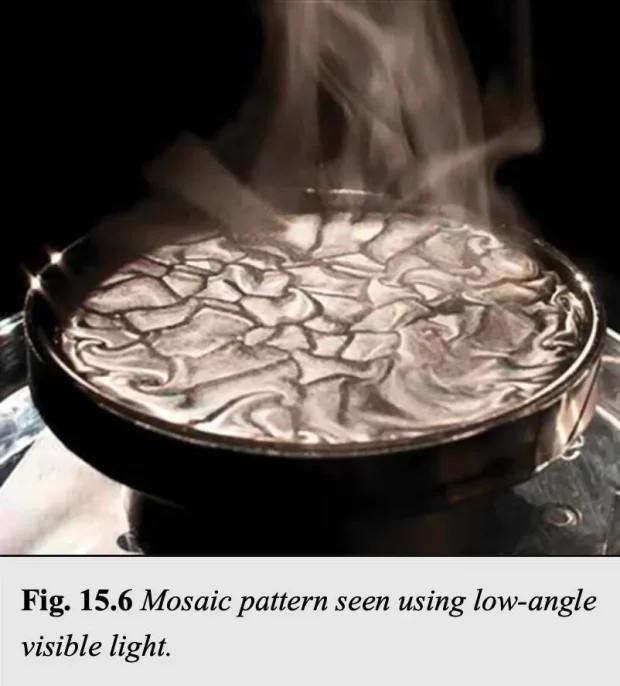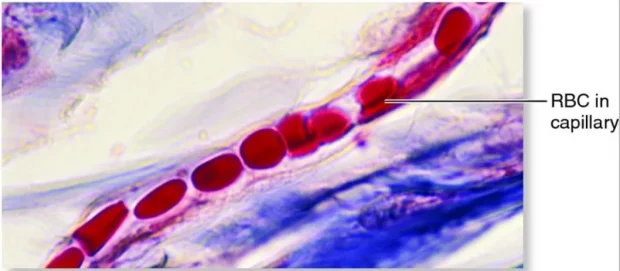To maintain the illusion of knowing everything, science will often choose to simply ignore phenomena which are too complex for its existing models to explain. So, despite water having a myriad of remarkable properties necessary for life, few are recognized by science and the many scientists who’ve recognized the hidden side of water are largely forgotten.
For example, German naturalist Viktor Schauberger (1885-1958) discovered that much of what water accomplishes in nature arises from its travel not in a linear manner, but rather in constant spirals and vortices, and created many revolutionary devices.
 Water: For Health, for...
Best Price: $1.63
Buy New $7.36
(as of 03:20 UTC - Details)
Water: For Health, for...
Best Price: $1.63
Buy New $7.36
(as of 03:20 UTC - Details)
In parallel, a team of Russian physiologists discovered the heart causes blood to travel in spiraling vortices, which drastically increases blood’s momentum and allows the heart to precisely direct where each type of blood goes within the body.
In short, water is thought of as a uniform, evenly mixed (homogenous) substance that exists to facilitate random mixing of biochemical reactants needed for life, despite abundant data (e.g., the Russian research) showing it often is highly structured.
Liquid Crystalline Water
Classically, we are taught water exists in three states: solid, liquid, and gas. However, throughout history, many researchers have observed that water (e.g., the “protoplasm” surrounding cells) assumes a gel-like state, behaving like a liquid crystal.
In 2009, after noticing that microspheres placed in water would be repelled by seemingly “empty” surfaces within the water Gerald Pollack was eventually able to explain how this seemingly impossible state of water was emerging. Once a few critical factors were present, water would assemble into a lattice on that surface, which prevented anything from passing through it, thereby creating an “exclusion zone” of water.
For exclusion zone water to form, it requires a hydrophilic surface, usually negatively charged. Once this condition is met, and electromagnetic energy is present (particularly infrared light, which exists everywhere), water, like a solar battery, will store that ambient energy by assembling into many layers of offset hexagonal sheets with the formula H₃O₂ often reaching 0.1mm in depth (which molecularly, is massive).

As Pollack describes:
This model yields a stable structure that sticks together naturally. This model yields predictable mechanical behavior: semisolid when left alone, yet able to flow in response to an imposed shear force. Its behavior should resemble gelatinous egg white.
Due to this lattice shape, each plane can easily slide past adjacent layers, allowing electrons to travel through the lattice with ease (resulting in conductivity approximately 100,000 times that of surrounding unstructured water).
Since this structure is “missing” protons (it’s H₁.₅O rather than H₂O), those protons go immediately outside the exclusion zone (EZ). Therefore, a negatively charged region exists within the EZ, while a positively charged region (which is acidic due to protons present) exists outside it. This, in turn, has been corroborated by numerous researchers who have both demonstrated a persistent pH change there and successfully harnessed its charge separation to power small electronics.
Since the negatively charged region exists in the crystalline structure, it prevents most substances and ions from existing within it. This separating quality has many uses including economical water purification and allowing cells to create the sodium potassium gradient which is necessary for life but far beyond what membrane pumps alone could accomplish (i.e., cells will continue to concentrate potassium after their membrane pumps are disabled).
Likewise, the EZ has increased viscosity, slowing substance diffusion, and can be directly observed by resonance imaging technologies detecting molecular restrictions (e.g., NMR and MRI).
Note: liquid crystalline water absorbs ultraviolet light (270 nm wavelength), radiates less infrared radiation than surrounding water, and has approximately 10% greater refractive index than bulk water. By each metric, EZ water has a higher density than normal water. It comprises the greatest water percentage at 4 degrees Celsius—the same temperature Viktor Schauberger identified as providing water’s greatest density.
This form of water is all around us in nature. For example, it forms the surface layer of water we typically associate with “surface tension” which is strong enough for water striders and certain lizards to stand upon. That layer, in turn, often behaves like a large connected sheet (best seen by observing large bodies of water from above) and when carefully examined, is actually a complex lattice that weaves through the body of water.

Note: Pollack has also made a strong case that liquid crystalline water facilitates different phase changes (e.g., freezing, water boiling, or water vapor becoming clouds).
Cellular Structural Integrity
Typically, cells are thought to be liquid bags whose contents are dictated by membrane lipids and proteins and held together by a cytoskeleton. However, liquid crystalline water (which forms along the cell membrane and the structures within cells) plays an equally pivotal structural role as it:
• Creates the gel-like stability of cells and tissue (which prevents them from suddenly leaking and spilling out once a puncture occurs).
• Creates a (continually regenerating) protective barrier which prevents things from entering the cells (and likewise protects the lining of blood vessels from being damaged by what flows past them or the load-bearing pivot point within joints from wearing down).
• Lubricates many surfaces, allowing them to slide past each other (e.g., the tendons and fascia are covered with a layer of this water). Conversely, as it disappears, tissues start to stick together (creating problematic adhesions), arthritis onsets, and the blood vessels become vulnerable to injury and atherosclerosis begins.
Note: this lubrication can also be observed outside the body (e.g., ice skating is possible because a layer of liquid crystalline water forms between the water and ice).
• Creates non-compressible pockets throughout the body, which are essential for biomechanics (e.g., joints have a layer of liquid crystalline water in the center which bears the force and weight of matching without becoming damaged or resisting the motion).
• These non-compressible structures allow the body to utilize a tensegrity based structure where elastic lines of tissue tension throughout the body can allow any force to be equally distributed throughout the body, both protecting any single area from buckling if exposed to excessive force and allowing free motion throughout the structure (rather than being like a typical building with a largely static one which relies on a single static core).
While many of these concepts initially appear quite abstract, one French hand surgeon found a way to visualize them through magnifying images obtained during surgery.
Mysteries of Microcirculation
All of the above raises many questions, one of which is how the 4th phase of water functions inside the body? I will present some of the findings below.
A consistent pattern emerges when examining each circulatory pathway in the body. Tiny spaces with no extrinsic force driving their flow simultaneously require regular movement through them, and without that flow, life cannot function.

Note: in many cases, the blood vessels through which red blood cells travel are smaller than the red blood cell, requiring the blood cell to deform to fit—something which could not occur without substantial force pushing the blood cell forward.
As the hydrostatic pumping force of the heart is largely absent at the capillary bed, many have wondered if an alternate driver of circulation exists. For example, spontaneous circulation can be observed in a developing embryo before heart development, while flow and pressures observed throughout the body are frequently inconsistent with heart-generated pressure being the driving force behind blood circulation.
When I’ve thought this question over at length, it does not seem realistic that the heart could provide enough force to move the red blood cells through every capillary in the body. What then could be causing the fluids inside the body to move?
Proton Induced Motion
Pollack and his team happened upon a chance discovery in their laboratory (discussed in great detail within this paper), which provided an answer to the mysteries of circulation:
Fluid commonly flows in response to an external pressure gradient. However, when a tunnel-containing hydrogel [which contains liquid crystalline water] is immersed in water, spontaneous flow occurs through the tunnel without any pressure gradient. We confirmed this flow in a wide range of plant- and animal-derived hydrogels.
As stated above, liquid crystalline water requires ambient infrared energy and a polar surface to form. A curious phenomenon occurs when that surface lines the inside of a tube—the liquid crystalline water lining the tube causes water to flow spontaneously through it.
EZs [regions of liquid crystalline water] were studied previously by immersing sections of tubes made of strongly hydrophilic material, Nafion, in aqueous microsphere suspensions. A microsphere-free EZ developed adjacent to the tube surface. In the central core of the tube, movement of microspheres demonstrated a flow, continuously sustaining itself at a velocity of ~10 μm/s in the axial direction… On the other hand, flow was not observed in tubes built of hydrophobic materials such as Teflon, which do not generate EZs.
Since liquid crystalline water’s formation requires ambient radiant energy, its presence influences observed flow:
We found that increased infrared energy substantially increased the flow velocity… application of ultraviolet-containing white light could boost flow velocity by up to 500%. Thus, the self-driven flow mechanism can convert radiant energy into kinetic energy.
Pollack theorized this flow was generated by mutual repulsion between positively charged protons expelled as water (H₂O) transitions to liquid crystalline (H₃O₂) water.
Several observations support this hypothesis. First, protons are continually added to water passing through:
We found that the exiting water had a lower pH value than the entering water; the pH difference exceeded one unit and never diminished — even after 30 minutes of continuous flow.
Second, flow was greatest in narrow tubes:
Another prediction of the proton-gradient hypothesis is that the flow should be faster in narrower tunnels…a narrower tunnel should lead to a higher proton concentration in the core…which should lead to faster flow in the narrower tunnels.
Note: narrow blood vessels are the most vulnerable to their blood flow being disrupted by an impaired zeta potential, and hence where the initial subtle signs of illness often appear.
Third, flow direction was always from the narrower end to the wider end:
 Cancer and the New Bio...
Best Price: $13.52
Buy New $18.07
(as of 03:15 UTC - Details)
Cancer and the New Bio...
Best Price: $13.52
Buy New $18.07
(as of 03:15 UTC - Details)
A common feature shared among the various flows was the direction—always toward the region with a larger cross-section or volume.
Each fluid conduit in the body is lined with a material recognized to create liquid crystalline water. For example, all blood vessels are lined with a protective glycocalyx, which remarkably well-suited for creating liquid crystalline water on its surface. Likewise, liquid crystalline water generating biomolecules divide cells into compartments and simultaneously, by lining the gaps with liquid crystalline water, create a primitive circulatory system, facilitating the exchange of metabolites necessary to sustain life.
The biological flow of fluids independent of a central pump has also been explored in animals:
Blood can apparently flow without a beating heart. After the heart had been arrested, postmortem blood flow was confirmed in mice, rats, dogs, and chick embryos. The flow persisted from 15 minutes to several hours. Furthermore, some amphibian larvae could live up to 15 days following surgical removal of the heart, implying an alternative means for propelling blood.
In short, the human vascular system is structured so that expelled protons can drive circulation, something that hydrostatic pumping alone is not sufficient to do.
Note: other organisms also utilize this mechanism. Plants require significant internal water transportation, but they have no pumping organs. In the lab, Pollack demonstrated that the xylem creates liquid crystalline water and that this flow allows water to overcome gravity’s resistance and climb up tubes.




